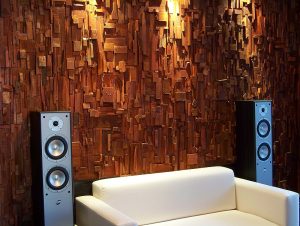 Sound deadening foam has many uses that determine how sound moves around a room, and how it fills the space in that room. Using different foam panels, you can redirect sound, eliminate white noise for a crisper recording, dampen bass and more. It’s all about learning which panels are best for diffusion, and which are best for absorption.
Sound deadening foam has many uses that determine how sound moves around a room, and how it fills the space in that room. Using different foam panels, you can redirect sound, eliminate white noise for a crisper recording, dampen bass and more. It’s all about learning which panels are best for diffusion, and which are best for absorption.
Diffusion
When you diffuse sound, you spread it throughout the space. Diffusion is good when you need to hear something in a larger space. It helps reduce echo, while filling the room with sound. These types of acoustic foam panels tend to have sharp edges to them. The sound just bounces off those edges at it travels through space.
Diffusing foam panels include:
- Pyramid panels
- Wedge panels
- Spade panels (while they absorb sound, they also help clarify it)
Deadening
Deadening the sound in a room helps to remove echo, reduce white noise exposure and create an excellent space for recording. Sound deadening can also be useful in apartments, where loud music systems can cause problems with neighbors. In general deadening panels tend to be much flatter than diffusal panels.
Deadening acoustic foam includes:
- Eggcrate panels (especially effective when used with soundproofing cloth)
- Grid panels
- Wave panels
Final Thoughts
Appearance also plays a role, which is why eggcrate is the least expensive option for sound deadening. If you’re trying to build a professional recording studio, grid or wave panels are going to be your first choice. They look nice, do the job well, and provide the best absorption for the cost. You may also want corner bass absorbers, which help to remove echo that the acoustic foam can’t catch in the corners of the room.
The Foam Factory, Inc. carries a variety of sound deadening foam panels for use in the home, or at a professional recording studio.
